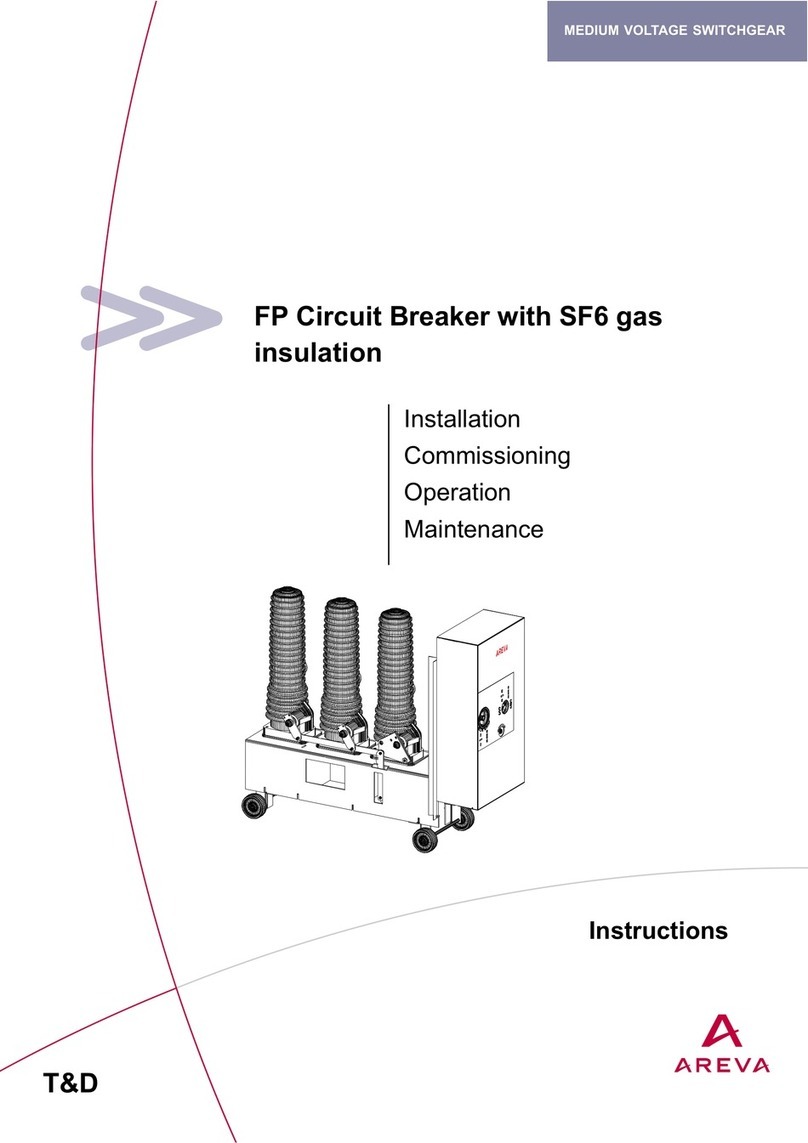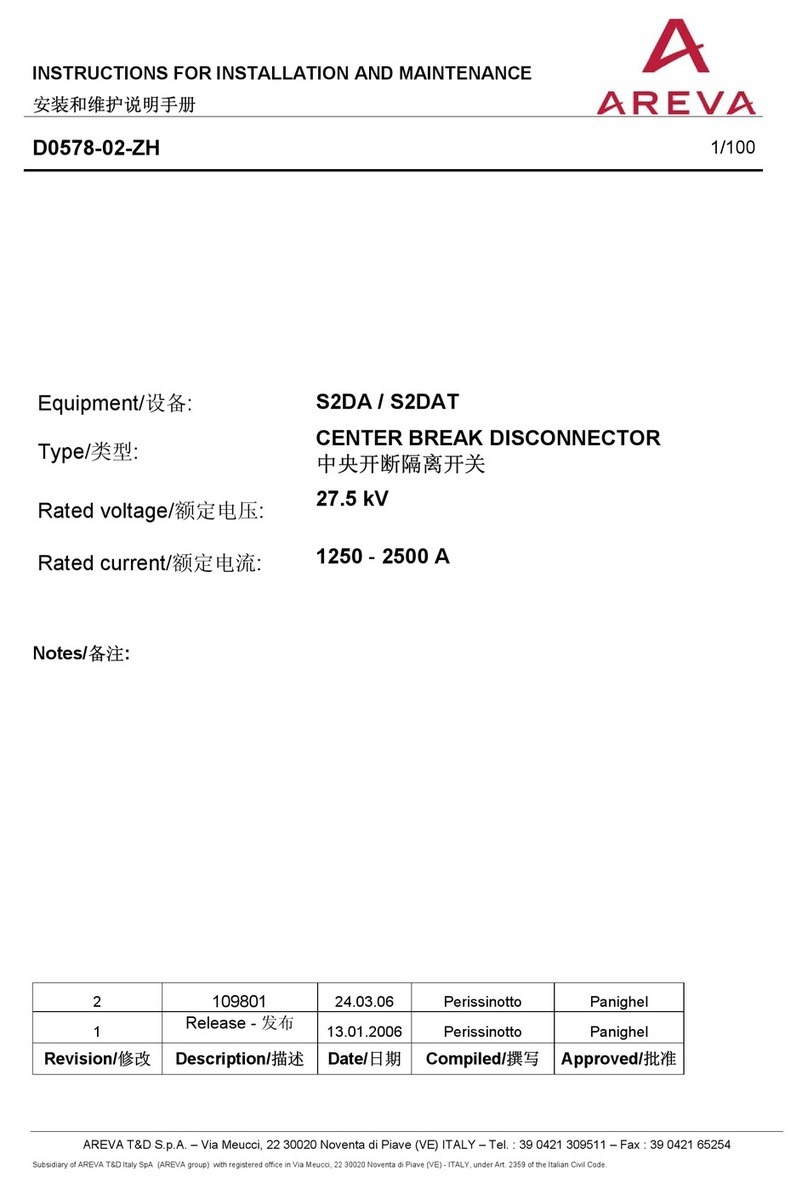1.4 Applied
standards
The three-pole HVX vacuum circuit-
breaker
•corresponds to the requirements
for AC switchgear for voltages
above 1 kV acc. to IEC 62271-
100;
•complies, regarding its switching
capacity and insulating level,
ANSI C37.... (please enquire at
the manufacturer's)
•corresponds, as a withdrawable
unit, to IEC 62271-102.
Type approval of vacuum interrup-
ter chambers acc. to. RöV
The vacuum interrupter chambers
have been approved by the X-Ray
Ordinance (RöV) of the Federal Re-
public of Germany up to a maximum
voltage amounting to the rated short-
time power-frequency voltage (rated
power frequency withstand voltage)
defined by DIN VDE/IEC. Thus, they
satisfy the conditions for operation
exempt of approval up to the voltage
in question according to the X-Ray
Ordinance (RöV).
Environmental and
operating conditions
HVX circuit-breakers may only be
operated under normal operating
conditions acc. to IEC 60694. Ope-
ration under conditions deviating
from these is only admissible upon
consultation and with the written ap-
proval of the manufacturer.
1.5 Safety provisions
The work described in this Technical
Instruction may only be performed by
specialist electricians who have pro-
ved their experience with the HVX
circuit-breaker and all relevant Safety
provisions.
Applicable standards and regulati-
ons:
•The locally applicable accident
prevention, operating and work
instructions must be complied
with.
•Installation 2):
IEC 61936-1 / HD 637 S1
•Operation of electrical equip-
ment 2): EN 50110-1
2) The national standards applicable in
the country where the equipment is
to be installed must be complied
with.
Read these instructions carefully be-
fore you work on the circuit-breaker,
and perform the work detailed in it
according to the descriptions. Do
not perform any work on the circuit-
breaker which is not described in
this Technical Instruction.
Warning!
Before starting work on
the circuit-breaker, de-
energize the system,
verify it for zero voltage
and earth the system according
to the applicable safety rules
pursuant to EN50110-1.
Warning!
Before performing work
on the circuit-breaker,
switch off the supply
voltage and prevent it
from reclosing.
Warning!
There is a risk of injury
when working on the
drive mechanism.
Before commencing work, re-
lease the energy-storing device
by performing the operating se-
quence OFF-ON-OFF and re-
mount the drive´s transport se-
curing device (see Chapter 6).
1.6 Disposal after the
end of service life
A manual on disposal after the end
of the service life is available for dis-
posal of the HVX vacuum circuit
breaker.
Disposal at the end of the service life
is performed as a service by the Ser-
vice Center at the manufacturer's
which is subject to a fee. Please
contact the Service Center (see
page 2).
Ambient conditions
Temperature class
"minus 5 indoors" 1)
Ambient temperature
min./max. -5 / 40oC 1)
Average value over 24
hours (max.) 35oC 1)
Max. installation altitu-
de above sea level 1000 m 1)
1) higher values on request
5





























